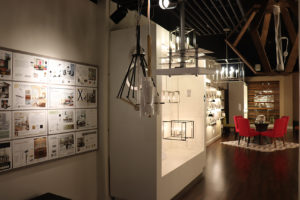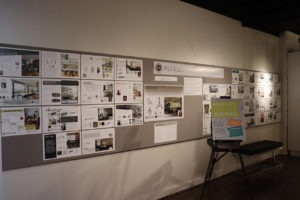2019 Golden Lighting Competition

Each year, Dr. Jill Pable and instructor Maxim Nasab lead a class full of third-year students on an exploratory mission to create unique light fixtures that fuse the needs of function with aesthetic innovation and appeal in the Fundamentals of Lighting and Computer-Aided Design 2 classes. This year, thanks to the generosity of Golden Lighting, students were able to build a working model of their fixture, giving life to what began as a rough sketch on paper. So many impressive pieces took shape as the juniors finished their models and a beautiful light show held in the department’s critique space became the crowning jewel to a difficult but worthwhile journey.

In addition to donating LED lamp sources that power the fixtures, Golden Lighting also sponsored a two-part competition amongst the student designers. After a multi-phased formative critique procedure undertaken by the faculty and Golden Lighting leaders that offered individual feedback to students, Golden Lighting leaders selected Wendie Duncan’s unique shape-transformative Arise lighting fixture as the company’s selected work. Judges remarked that “Wendie has taken a new approach to dimming, which allows users to change the light’s form and brightness level simultaneously. This innovative approach enables end-users to customize their look, and encourages playful interaction fostering connectivity.”
Later in the summer, Golden Lighting hosted the students’ lighting fixture posters and a selection of models in their Dallas Market showroom during the summer market event. Opening the decision to designers visiting the Dallas showroom, Kristin Rushlow’s Lana light fixture was selected as the People’s Choice Award winner. Notes Golden Lighting, the seashell-inspired piece “captivated the audience with its complex intriguing layers yet soft features and appeal.”
This project challenged students to think about the balance of function and aesthetic needs while simultaneously considering fabrication realities. We are proud of the creativity shown by all these students and are excited to see how these skills will influence their further work within the program.
- Wendie Duncan with Arise Light Fixture
- Kristen Rushlow with Lana Light Fixture

